This article examines Best Crypto Exchanges for Accurate Price Alerts and most importantly, real time, reliable price notification systems.
Price alerts serve as a key component for traders in assessing the volatile marketplace. I analyze the most preferred exchanges taking into account
Their liquidity, available coins, fees, and the effectiveness of their price feeds in providing timely and accurate alerts for newbies and seasoned traders.
Key Points & Best Crypto Exchanges for Price Alert Accuracy List
Binance – Offers real-time alerts with customizable thresholds and broad coin coverage.
Coinbase – User-friendly interface with reliable push and email notifications.
Kraken – Precise price triggers and advanced trading tools for accurate alerts.
Gemini – Secure platform with timely SMS and email alert options.
BYDFi – Known for 1:1+ Proof of Reserves and dependable alert systems.
Bitunix – Fast mobile alerts and high responsiveness for active traders.
CoinDCX – Indian exchange with accurate alert settings and UPI support.
Delta Exchange – Low latency alerts and customizable trading signals.
Coinswitch – Simplified interface with quick alert delivery for Indian users.
BingX– Integrated with Binance for fast price updates and alert accuracy.
10 Best Crypto Exchanges for Price Alert Accuracy
1. Binance
Binance Established in July 2017 by Changpeng Zhao and Yi He. Binance employs a tiered maker/taker fee model – for everyday users, spot trading is approximately 0.10% for both maker and taker.
It is compatible with more than 500 cryptocurrencies and has over 1,500 trading pairs. Due to its enormous liquidity and the depth of its global order book
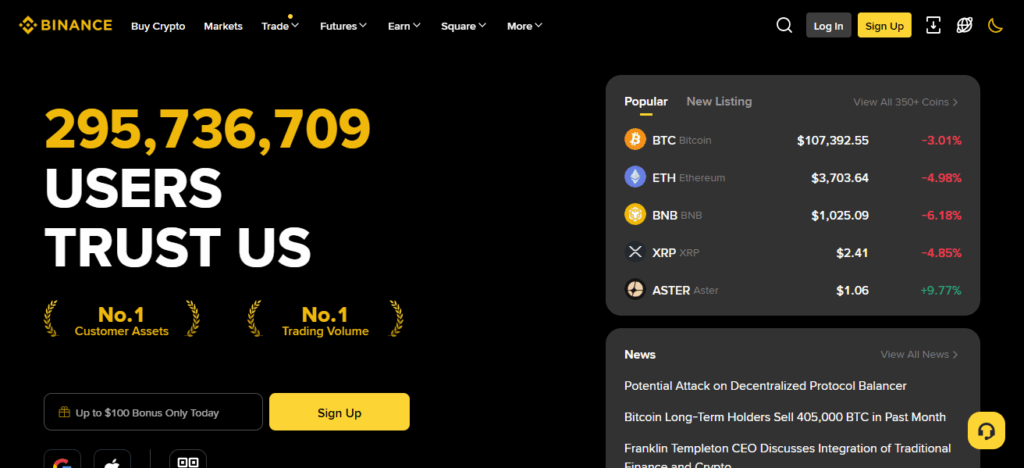
Binance is particularly precise in capturing the real-time price fluctuations of crypto assets and in providing price alerts. The high trading volumes minimize slippage and make price alerts more relevant.
Pros And Cons Binance
| Pros | Cons |
|---|---|
| Real-time price alerts with customizable triggers | Interface may be overwhelming for beginners |
| Supports over 350 cryptocurrencies | Regulatory scrutiny in some countries |
| Low trading fees (0.1%) | Limited customer support responsiveness |
| Advanced trading tools and mobile app integration | Occasional withdrawal delays during high traffic |
2. Coinbase
Coinbase was established in June 2012 by Brian Armstrong and Fred Ehrsam. The details concerning fees are more intricate (depends on product and area) – i.e., they may include institutional and conversion fees; retail fees are extremely heterogeneous.
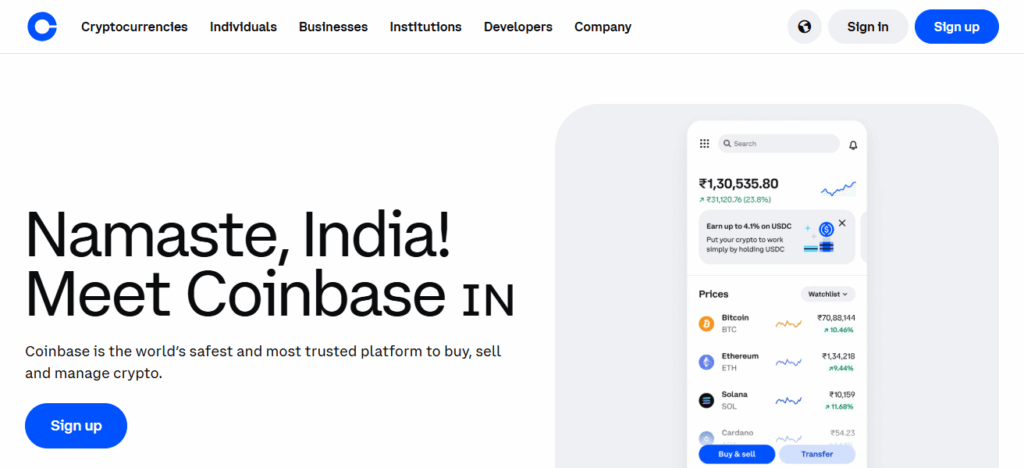
At the conclusion of 2020, they supported more than 90 crypto assets that could be traded and held in custody. Due to regulation and solid infrastructure, Coinbase Alerts are quite reliable for mainstream assets.
Alerts for smaller altcoins may lag behind ultra deep exchanges. Price feed reliability for major pairs is decent, though for smaller altcoins the feed may lag compared to ultra-deep exchanges.
Pros And Cons Coinbase
| Pros | Cons |
|---|---|
| Simple UI with reliable push/email alerts | Higher fees compared to competitors |
| Regulated and publicly traded | Limited coin selection compared to Binance |
| Strong security and insurance coverage | Advanced trading tools only on Coinbase Pro |
| Easy setup for price alerts | Slower rollout of new features |
3. Kraken
Founded in the US on July 28, 2011. Kraken offers numerous services; for example, its instant Buy/Sell service may charge
1% fee plus a spread, and spot/professional trading earns you maker/taker fees (some guides list 0.25% and 0.40% respectively, but this varies by volume and region).
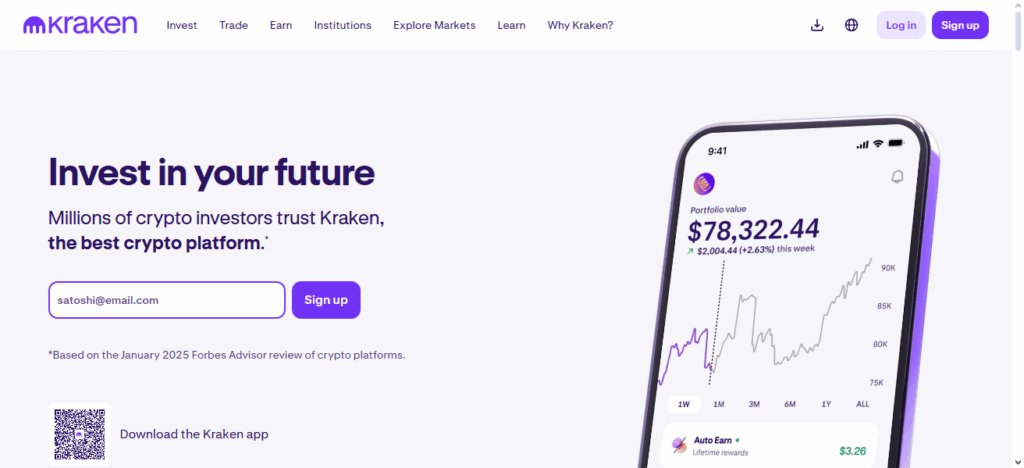
Kraken excels in providing access to a massive array of cryptocurrency options (over 450, with spot, futures and staking accessible).
In terms of price alerts, Kraken’s reputation for security and fair execution is useful for conservative alerts (although its global liquidity is lower than the largest exchanges).
Pros And Cons Kraken
| Pros | Cons |
|---|---|
| Precise price triggers and API support | Interface less intuitive for casual users |
| Supports over 200 coins | Limited fiat deposit options in some regions |
| Low fees for high-volume traders | No instant buy/sell for all coins |
| Strong reputation for security | Mobile app less feature-rich than desktop |
4. Gemini
Gemini started in 2014, the brainchild of the Winklevoss twins, Tyler and Cameron. Their fee structure is steeper than many low‑fee global competitors due to being a U.S. regulated exchange (fee percentages vary by method & region).

Gemini lists major cryptocurrencies and gradually adds newer ones. For price alerts, Gemini is reliable for the most popular cryptocurrencies
Though for tin pairs, liquidity and global depth may be reduced, impacting promptness in responding to alerts as compared to larger international exchanges.
Pros And Cons Gemini
| Pros | Cons |
|---|---|
| Regulated and security-focused | Higher trading fees on standard platform |
| Clean interface with alert customization | Limited coin selection |
| Offers SMS and email alerts | Fewer advanced trading features |
| Strong compliance and transparency | Not ideal for high-frequency trading |
5. BYDFi
BYDFi (previously known as Bybit Finance) began operating as a cryptocurrency derivatives and spot trading exchange in March 2018.
Fee structure: usually very competitive, especially for derivatives, though numbers differ by contract and VIP tier. It supports a significant amount of coins and token pairs (spot + futures), and “supported coins” numbers fluctuate over time notately.
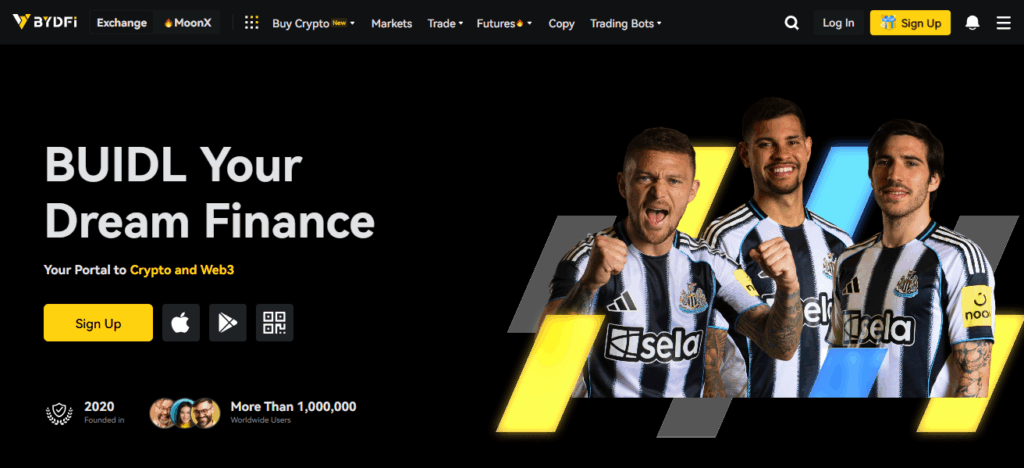
For price‑alert accuracy: since BYDFi focuses on derivatives and has many pairs, price alerts can be prompt, however confirms feed latency and exchange connectivity for the pairs used.
Pros And Cons BYDFi
| Pros | Cons |
|---|---|
| Supports 1,000+ spot assets and 500+ contracts | Newer platform with less brand recognition |
| Fast and customizable alerts | Limited fiat support |
| Low fees and high leverage options | Smaller user base compared to major exchanges |
| Mobile app optimized for alerts | Fewer educational resources for beginners |
6. Bitunix
Bitunix Compared to its peers, Bitunix is a relatively new multi-asset crypto exchange, however, public information is not as complete as for major competitors, especially in terms of date of establishment, full fee schedules, and lists of supported cryptocurrencies.

Therefore, for the precision of price alerts, it is advisable to assess the accuracy of their feed for the respective coins. Due to lower liquidity, the quality of alerts may be poorer or slippage may be greater.
Pros And Cons Bitunix
| Pros | Cons |
|---|---|
| High-speed mobile alerts | Limited global availability |
| Competitive trading fees | Smaller coin selection |
| Simple interface for quick trades | Less known among mainstream users |
| Good for short-term traders | Limited fiat on-ramp options |
7. CoinDCX
CoinDCX is an Indian cryptocurrency exchange that was established in 2018 by Sumit Gupta and Neeraj Khandelwal. Targeting the Indian fiat currency market, it allows users to trade over 500 cryptocurrencies.
CoinDCX implemented various maker/taker fee structures like 0.007% and 0.030% in the VIP tier, and lower than 0.08% for higher tier spot and futures accounts.
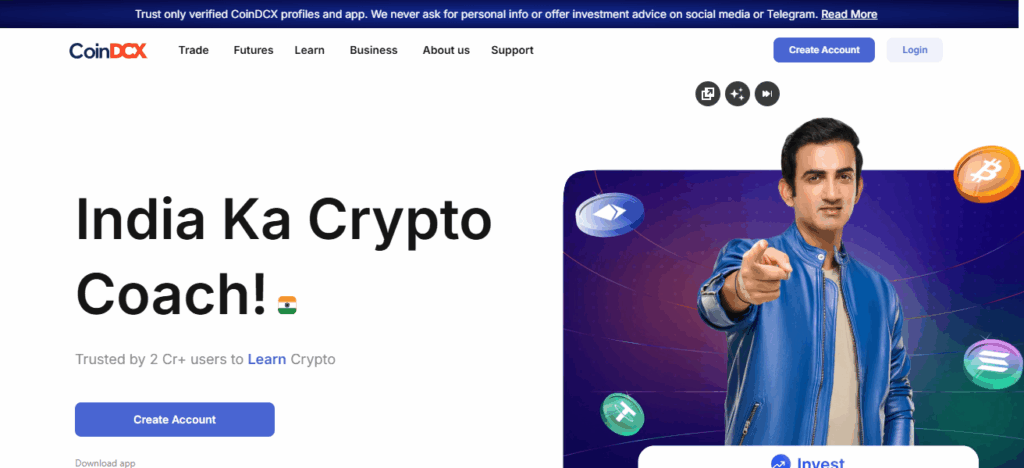
Users in India looking for price alert features will find CoinDCX designed for good integration with Indian currency and user interface
But for globally available alternative currency pairs and cross exchange arbitrage alerts, you would still choose a global exchange with better liquidity.
Pros And Cons CoinDCX
| Pros | Cons |
|---|---|
| Indian exchange with UPI support | Primarily focused on Indian market |
| Accurate alert settings via app | Limited global coin access |
| Easy onboarding for new users | Slower international expansion |
| Strong local compliance | Fewer advanced trading tools |
8. Delta Exchange
Delta Exchange was established in 2018, according to summary lists. Delta Exchange often works with derivatives (crypto options/futures) and has a number of supported coins.
Fee structures differ (some transactions state “zero trading fees”) but you should check this for your area.
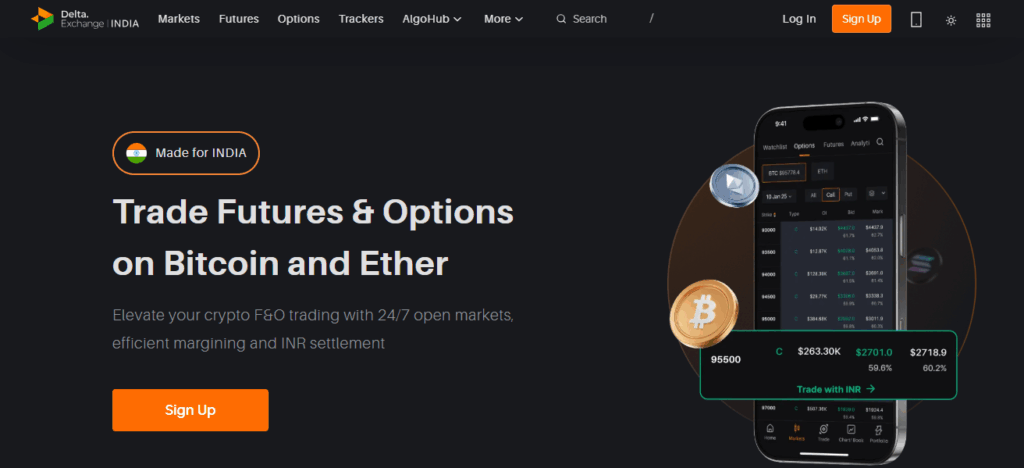
Since Delta Exchange works with derivatives and may have less spot depth on certain tokens, price‑alert precision for spot markets may not be as accurate; for derivatives alerts, it should function appropriately.
Pros And Cons Delta Exchange
| Pros | Cons |
|---|---|
| Low latency alerts and trading signals | Focused mainly on derivatives |
| Competitive fees for futures trading | Smaller spot market |
| Supports advanced strategies | Limited fiat support |
| Good for professional traders | Less beginner-friendly interface |
9. Coinswitch
Coinswitch: Established in India in 2017 by Ashish Singhal, Govind Soni, and Vimal Sagar Tiwari. Simplicity and ease of use in a spread-based fee model (as opposed to fixed maker/taker) for most use cases over a full order-book depth trading.

For price alerts, given that the underlying execution model may be less order-book-deep than major global exchanges, alerts are adequate for local/investment purposes, but may be less suitable for high-frequency alerting on low-liquidity coins.
Pros And Cons Coinswitch
| Pros | Cons |
|---|---|
| Simplified interface for Indian users | Limited to Indian residents |
| Quick alert delivery | Smaller coin selection |
| Easy fiat integration | No advanced trading features |
| Good for beginners | Less suitable for global traders |
10. BingX
BingX is yet another global crypto exchange that provides spot and derivatives. Compared to the bigger players in the industry
The founding date and fee schedule may be less documented in reputable sources, so the most up-to-date information should be checked before relying on.
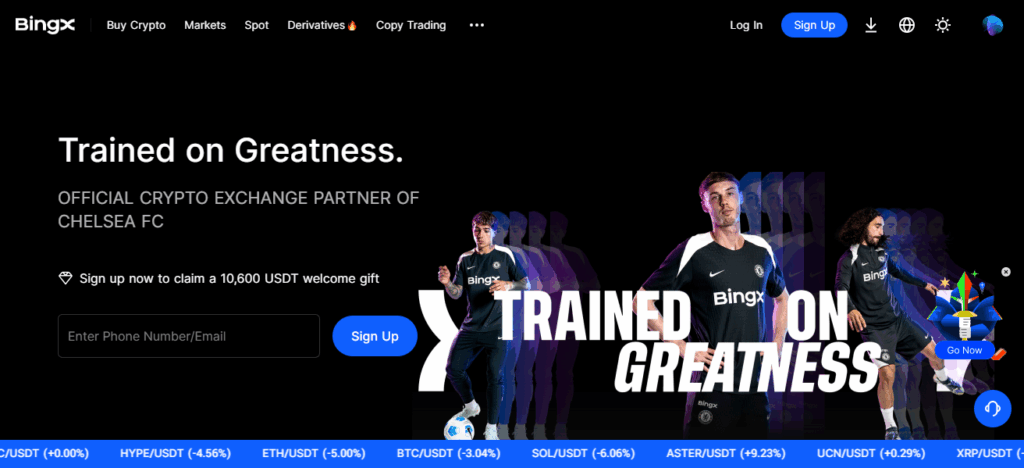
For the most accurate price alerts: if you select highly liquid pairs, it should perform decently but you need to validate your alert configuration first (data feed latency, exchange downtime) before trusting it.
Pros And Cons BingX
| Pros | Cons |
|---|---|
| Real-time alerts and copy trading features | Less known in Western markets |
| Supports spot, futures, and copy trading | Interface may feel cluttered |
| Competitive fees and global access | Limited fiat deposit options |
| Strong mobile app performance | Fewer educational tools |
Conclsuion
To assess price alert accuracy one must take into consideration liquidity depth, speed of order books, and data feed reliability.
Globally, Binance, Kraken, and Coinbase are most prominent and provide alerts for top-tier coins. For Indian customers, local fiat integration brings CoinDCX or CoinSwitch into consideration.
From an alert execution and trading perspective, the trading environment’s liquidity, regional offer, and API trustworthiness are pivotal, as slight delays are exacerbating.
FAQ
High liquidity, fast order books, reliable data feeds, and low latency ensure that price alerts reflect real market movements promptly.
Binance, Kraken, and Coinbase are considered the most accurate due to deep liquidity and advanced infrastructure.
Yes, CoinDCX and CoinSwitch are popular in India, offering local fiat support and decent alert accuracy for major coins.
No, fees do not impact the alert itself, but high fees can influence trade execution when acting on alerts.
Yes, alerts for low-volume coins may be delayed or prone to slippage due to thinner order books.



